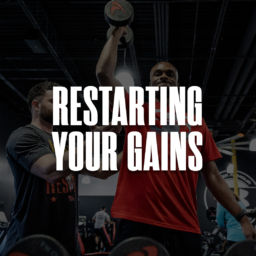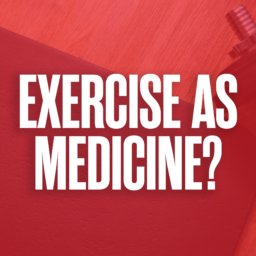Walking is something that most of us do on a daily basis. It’s the way many of us get from Point A to Point B in short distances. In fact, walking is so low impact and accessible that you may not think it can have a high impact on your health. That’s a misconception that Taylor Kilgore, a certified personal trainer at Texas Health Fitness Center Willow Park, wishes didn’t exist because she’s seen first-hand how impactful a simple walk can be for someone’s overall wellbeing.
So we asked her for some pointers on how to make the most of a daily walk and how important getting up and moving is, even if it’s something as simple as walking.
Low-impact exercise, high-impact on health
Walking comes with many benefits. One is that it can help with immune function. People who walk at least 20 minutes a day, at least 5 days a week, have been shown to have 43% fewer sick days than those who exercised once a week or less. And in the case that they did get sick, it was for a shorter duration and their symptoms were milder.
“Walking five to six miles a week can even prevent arthritis from forming in the first place,” says Kilgore. “Walking protects the joints — especially the knees and hips, which are most susceptible to osteoarthritis — by lubricating them and strengthening the muscles that support them.”
Additionally, walking can benefit those who just recently underwent knee or hip surgery by promoting blood flow to the area and prevent scar tissue from building up.
Walking is an “every person’s” sport
The great thing about walking is that it transcends generations. Young children up to some of the oldest (and wisest) members in our community can participate and benefit. In fact, a regular walk can not only help your health now but help you maintain it in the future.
“A regular walk doesn’t just get seniors out of the home, it could help them stay at home, as well,” Kilgore says. “A study out of the University of Georgia in 2008 found that regular walking reduced elderly adults’ risk of developing a physical disability by 41%, helping them maintain their independence and age in place.”
Kilgore adds that walking is also a great way to get “back on the horse” if your physical activity has taken a decline since the pandemic shook up everyone’s routines.
“Set yourself up for success and start with a simple goal,” Kilgore says. “That can be as simple as taking a 5- or 10-minute walk during your lunch break. When your 5- or 10-minute walk becomes a habit, set a new goal, such as, ‘Now I’ll walk for 20 minutes after work.’ Soon you could be reaching for goals that once seemed impossible!”
Start off on the right foot
So how do you get started? While walking graciously requires very minimal equipment, Kilgore adds that arming yourself with high-quality gear will keep you walking longer.
“Choosing the right footwear is essential for comfort and to reduce the risk of injury,” she explains. “When choosing proper footwear, ensure that the shoe has exceptional shock absorption and is built to be durable and long-lasting. Another thing to keep in mind when looking for footwear is added grip in the rubber outsole. This aids in helping to prevent slips and falls.”
Warming up is just as pivotal as finding the right gear, as well. While you may not immediately assume you need to warm up for a walk, Kilgore says warming up not only prevents injury but helps increase blood and oxygen flow throughout your body and your muscles.
Aim to warm up for no less than 5- to 10 minutes, and your warmup should include a dynamic style of stretching. That means stretches that require consistent movement. For example, gently swinging your legs back and forth, rolling your shoulders forward and backward, moving your head side to side and in circles to stretch your neck, circling your ankles, and gently twisting your torso on each side — whatever helps you feel loosened up and ready for your walk.
Make the Time
If you’re setting out on a new walking routine, it’s always great to have a goal in mind but listen to your body, even if that means having to turn back to go home before you hit your goal. With time, you’ll reach that goal, but getting injured or straining yourself won’t help you get there any faster.
Begin where you are and worry less about how far you walked and more about how long you walked, then increase your time from there. How far you are able to go in the same span of time will increase as your endurance increases. For now, if a ten-minute walk gets your heart rate up, focus on making the most of those 10 minutes, and with some dedication and time, eventually those 10 minutes will get easier, and you’ll be ready to up your walk time.
Ramp Up the Intensity
There are many ways to challenge yourself when trying to up the intensity of your walk, whether you prefer to take your walk outdoors or on the treadmill.
“Pick a more challenging path, one with a few hills if you are comfortable,” says Kilgore. “Many trails have different paths you can choose from — some longer in miles and some a bit more challenging with slight hills.”
Another easy way to up the intensity is to involve weights. Grab a pair of light dumbbells and bring them on your walk. If you want to keep your hands free, you can also invest in a pair of ankle or wrist weights. For an even more intense workout, consider a weighted vest.
Take Time to Rest
You may not think a brisk walk requires rest, but anyone who’s ever spent a long day at a theme park knows even walking can tucker you out.
Just with any other type of exercise you should give your body time to rest and recover. Although walking has a low risk of injury you can still injure yourself if not resting when needed. Listen to your body if you start to feel aches and pains and take that day to rest. Try stretching instead or meditating.
Whether it’s a quick stroll around the neighborhood or a multi-mile caravan across your favorite trail, Kilgore says you can’t get the benefits of walking from sitting down.
“Get out and start walking! It can truly bring you so many benefits,” she says. “All you have to do is start!”









